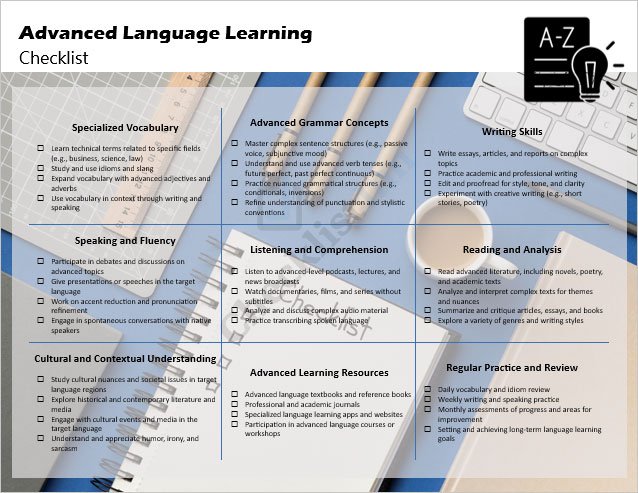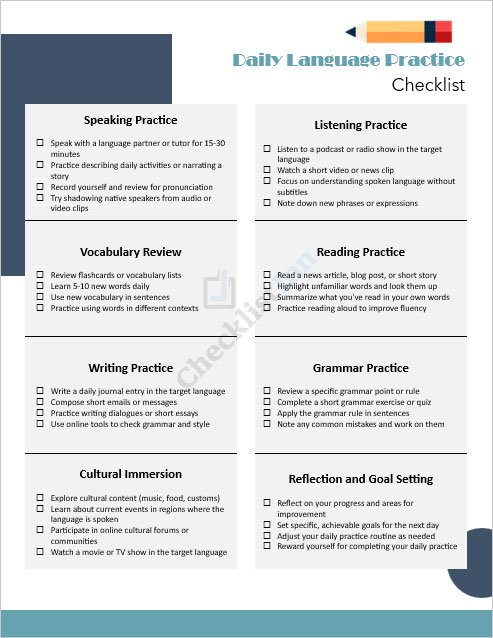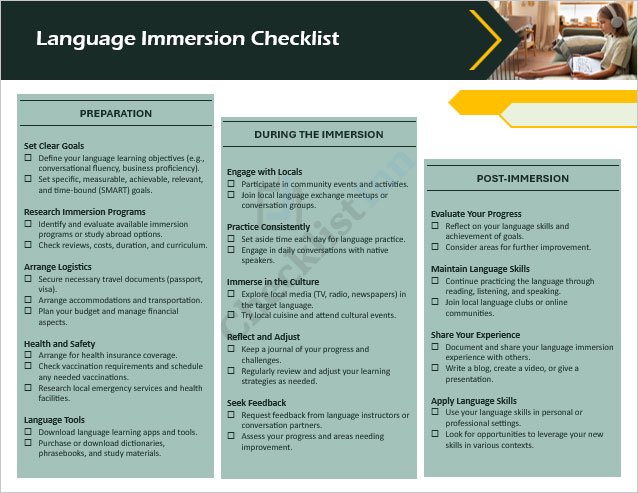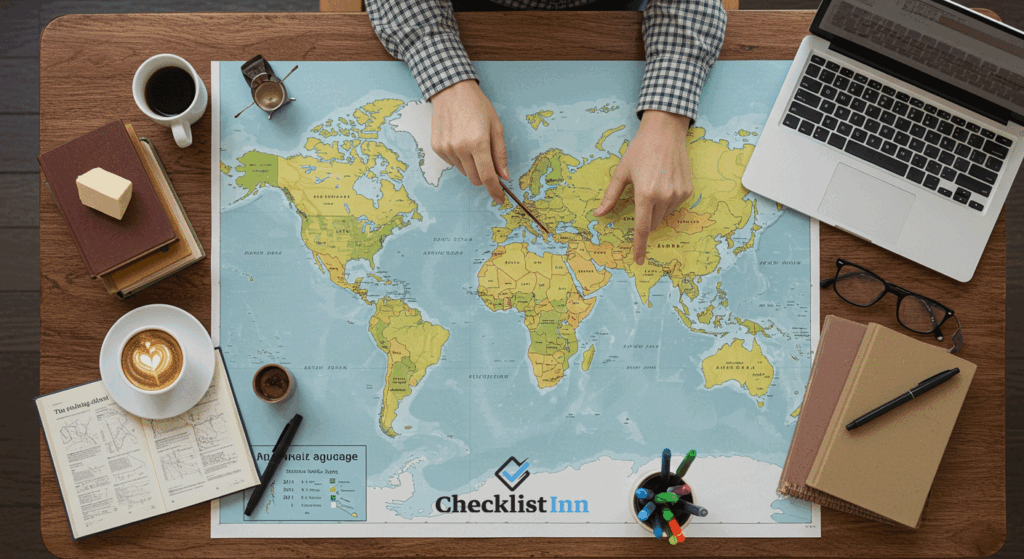Master any language step by step with our practical, easy-to-follow checklists and expert tips.
Learning a new language becomes a lot easier when you have a clear plan to follow. That’s where our free language learning checklist templates come in. Whether you’re just starting as a beginner, building fluency at an intermediate level, or polishing your skills as an advanced learner, these checklists will help you stay organized and motivated. Each template is fully editable in MS Word, making it simple to track progress, set daily goals, and create a personalized study plan that actually works.
This is just as good as having a tutor. It simplifies your goals to easily achieve objectives such as; acquiring new vocabulary, completing quizzes, or conversing with other people. With this template, you can be able to note what you have accomplished and what follows; thereby improving your studying process. It motivates one throughout the journey and also helps them know how far they’re from being fluent speakers.
Ready to get started? Download our free Templates and take the first step towards mastering a new language!





Checklists aren’t just convenient—they tap into psychology to make language learning more effective. Here’s how they help you stay on track:

Manage Mental Overload – Instead of juggling everything in your head, checklists break big goals into smaller, manageable steps, making it easier to focus and progress.
Boost Motivation – Turning vague goals into clear tasks gives you a sense of achievement each time you tick something off, keeping you motivated with visible progress.
Encourage Action – With tasks laid out, it’s easier to start and build consistent habits, helping you avoid procrastination.
Stay Organized – A checklist keeps everything in one place, ensuring you don’t miss important areas of practice while saving time.
Stay Accountable – Acting as your personal progress tracker, a checklist keeps you focused, adaptable, and aware of how far you’ve come.
Take your language skills further with practical strategies and the right tools to make learning faster and more enjoyable.
Effective Language Learning Strategies
Resources and Tools for Success
Motivation and Overcoming Challenges
Advanced Learning Techniques
Learning a new language can feel overwhelming with so many skills to practice—vocabulary, grammar, speaking, listening, and cultural nuances. A checklist can make the process simpler and more effective.
Using checklists turns language learning into a structured, manageable, and motivating journey.

Picking a language can feel tricky, but the right choice makes learning enjoyable. Here’s how to decide:
Choosing a language is about what fits your goals, interests, and lifestyle. Pick one that excites you and enjoy the journey.

It depends on the language and your practice. With regular study, you can see progress in a few months.
Yes! Apps, books, online courses, and checklists work well. Practicing with native speakers can speed up learning.
Short daily sessions (15–30 minutes) are more effective than long, infrequent ones. Consistency matters most.
They break learning into manageable tasks, track progress, and make sure you practice all skills—reading, writing, speaking, and listening.
Forgetfulness is normal. Review regularly, use spaced repetition, and apply the language in real situations to retain it.